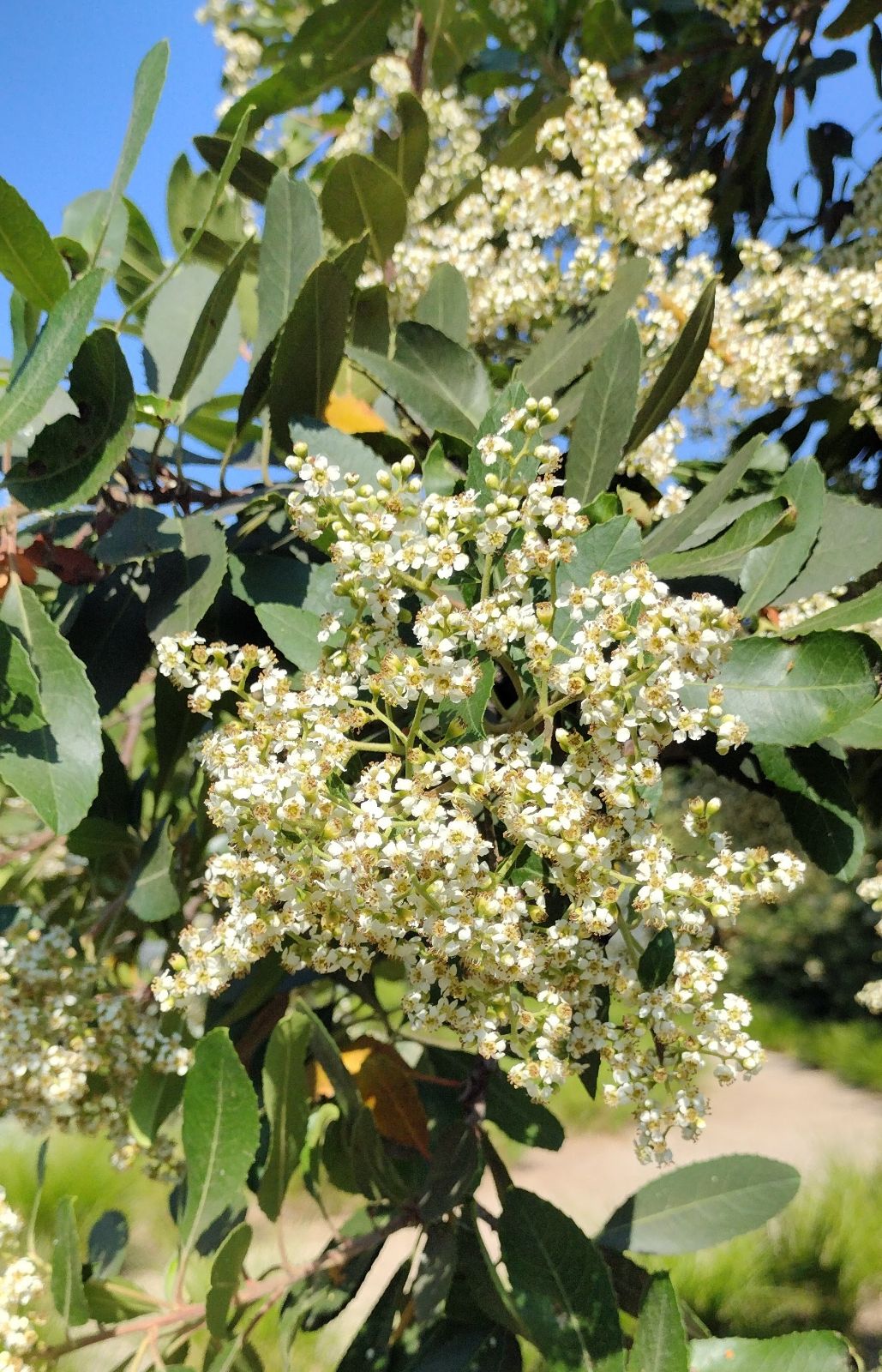Heteromeles arbutifolia
Credits
New article for Trees and Shrubs Online.
Recommended citation
'Heteromeles arbutifolia' from the website Trees and Shrubs Online (treesandshrubsonline.
Genus
Synonyms
Other taxa in genus
TEXT FROM BEAN (where it was treated as Photinia arbutifolia)
An evergreen tree occasionally 30 ft high, or in cultivation more often a shrub, with downy young bark. Leaves stiff and leathery, 2 to 4 in. long, 3⁄4 to 11⁄2 in. wide, oblong, lanceolate or obovate, tapering at the base to a thick downy stalk 1⁄2 to 3⁄4 in. long, the margins set with stiff teeth, each tipped with a small black gland. Flowers produced very numerously in a large, flattish panicle, composed of corymbose clusters terminating the shoot, and in the axils of the uppermost leaves. Each flower is from 1⁄4 to 3⁄8 in. diameter; petals pure white; calyx-tube with glabrous, triangular lobes; stamens ten. Fruits about the size of holly berries, bright red, tasting like common haws.
Native of California; introduced by Menzies in 1796. It is a handsome evergreen, but unfortunately not reliably hardy. It may be grown on a wall, but is, of course, at its best in the open where the climate is suitable. In California the fruit-covered branches are used for Christmas decorations as we use holly.




